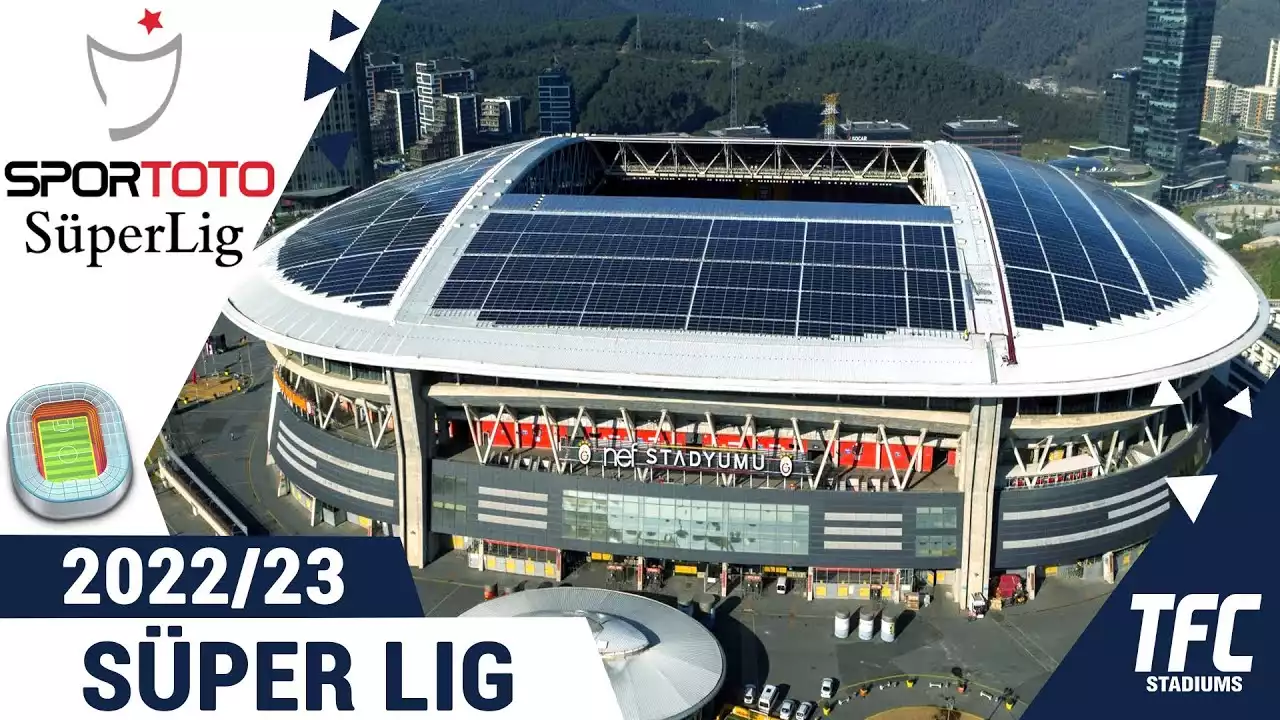Importance of considering climate in stadium design
When it comes to stadium design, considering the climate is of paramount importance. The climate of a region plays a crucial role in determining the comfort and safety of both players and spectators. In Turkey, where the weather can be extreme, architects and engineers have to be especially mindful of the unique challenges posed by the climate. By taking into account factors such as temperature, humidity, precipitation, and wind patterns, stadium designers can create spaces that are not only visually stunning but also functional and comfortable for all.
One of the primary considerations in climate-responsive stadium design is temperature control. In Turkey's scorching summers, providing adequate cooling systems becomes essential to ensure the well-being of athletes and spectators alike. Simultaneously, in the freezing winters, proper insulation and heating systems are critical to maintain a comfortable environment. By integrating intelligent climate control technologies, such as efficient air conditioning and insulation methods, architects can create stadiums that are adaptable to the changing weather conditions throughout the year.
Another important aspect of climate-responsive stadium design is the consideration of wind patterns. Turkey is known for its strong and sometimes unpredictable winds, which can greatly affect the comfort and safety of those inside the stadium. Architects must carefully analyze the wind patterns in the area to determine the best orientation and shape for the stadium. By using wind tunnels and computer simulations, they can optimize the stadium's design to minimize wind turbulence and create a pleasant experience for spectators.
Climate factors to consider in stadium design in Turkey
Turkey's diverse climate presents unique challenges that architects must address when designing stadiums. The country experiences three main climate zones: Mediterranean, continental, and Black Sea. Each of these zones has its own distinct characteristics, including temperature, humidity, and precipitation patterns. Understanding these factors is crucial for architects to create stadiums that can withstand Turkey's climate conditions.
In the Mediterranean climate zone, which covers the southern coastal areas, the summers are hot and dry, while the winters are mild and rainy. Stadium designers in this region must focus on effective cooling systems to combat the intense heat during summer months. This can include the use of natural ventilation, shade structures, and evaporative cooling techniques to create a comfortable environment for players and spectators. Additionally, strategies to manage rainfall and prevent water accumulation on the field should also be implemented.
In the continental climate zone, which includes central Anatolia, the summers are hot and dry, while the winters are extremely cold and snowy. Stadiums in this region must be designed to withstand both extremes. This can involve incorporating insulation materials, efficient heating systems, and snow removal mechanisms. Additionally, architects must consider the impact of freezing temperatures on the structural integrity of the stadium and ensure it is built to withstand the weight of snow and ice.
The Black Sea climate zone, which covers the northern coastal areas, is characterized by high levels of rainfall and humidity throughout the year. Stadium designers in this region must address the challenges posed by frequent rainfall, including proper drainage systems to prevent waterlogging on the field and within the stadium. Additionally, humidity control mechanisms should be implemented to provide a comfortable environment for players and spectators.
Impact of hot and dry climate on stadium design
The hot and dry climate of Turkey poses unique challenges for stadium design. In regions with scorching summers, architects must prioritize effective cooling systems to ensure the comfort and safety of players and spectators. One innovative solution is the use of natural ventilation techniques. By strategically placing openings and vents, architects can create a flow of fresh air throughout the stadium, reducing the reliance on energy-intensive air conditioning systems. Additionally, shade structures, such as canopies or retractable roofs, can provide protection from the sun's heat while allowing natural light to illuminate the field.
Another consideration in hot and dry climates is the prevention of heat-related injuries. Stadium designers in these regions must incorporate features such as misting systems, shaded seating areas, and water fountains to help cool down the spectators and athletes. Additionally, the choice of construction materials is crucial. Opting for light-colored surfaces and heat-reflecting materials can minimize heat absorption and reduce the overall temperature within the stadium.
It is also important to consider the impact of hot and dry weather on the playing surface. Turf grass, commonly used in stadiums, requires adequate irrigation to maintain its health and prevent it from drying out. Stadium designers must incorporate irrigation systems that are efficient and can provide the necessary water without wasting resources. Additionally, the use of drought-resistant grass varieties can be beneficial in reducing water consumption.
Impact of cold and snowy climate on stadium design
Turkey's cold and snowy climate presents its own set of challenges for stadium design. In regions with freezing winters, architects must consider the impact of snow and ice accumulation on the stadium's structure and functionality. One approach is the integration of snow removal mechanisms, such as heated roofs or retractable covers, to prevent snow buildup on the stadium and ensure safe conditions for players and spectators. These mechanisms can be automated or manually operated, depending on the specific requirements of the stadium.
Insulation is another key consideration in cold climates. Proper insulation materials and techniques are essential to maintain a comfortable temperature inside the stadium and reduce energy consumption. This includes insulation not only for the walls and roof but also for the seating areas and floors. By minimizing heat loss and creating a well-insulated environment, architects can create stadiums that are energy-efficient and able to withstand the harsh winter conditions.
Furthermore, heating systems play a crucial role in cold climates. Stadium designers must incorporate efficient heating systems that can provide warmth to both the playing area and the seating areas. This can include underfloor heating, radiant heating panels, or forced-air heating systems. By ensuring that the stadium remains comfortably warm during winter events, architects can enhance the overall experience for both athletes and spectators.
Impact of rainy and humid climate on stadium design
In regions with a rainy and humid climate, architects must address the challenges associated with frequent rainfall and high levels of humidity. Proper drainage systems are essential to prevent waterlogging on the field and within the stadium. This includes the installation of effective stormwater management systems, such as gutters, downspouts, and underground drainage pipes. Additionally, the pitch should be constructed with porous materials that allow water to drain quickly and efficiently.
Humidity control is another important consideration in rainy and humid climates. Excessive humidity can create an uncomfortable environment for players and spectators, as well as promote the growth of mold and mildew. Architects must incorporate ventilation systems that can efficiently circulate air and regulate humidity levels. This can be achieved through the use of mechanical ventilation systems, dehumidifiers, or natural ventilation techniques, depending on the specific requirements of the stadium.
The choice of construction materials is also crucial in humid climates. Materials that are resistant to moisture and mold growth, such as treated wood or moisture-resistant paints, should be used. Additionally, proper waterproofing techniques should be implemented to prevent water infiltration and damage to the stadium's structure.
Sustainable stadium design in Turkey's climate
In recent years, there has been a growing emphasis on sustainable stadium design in Turkey. As the country seeks to reduce its carbon footprint and promote environmentally friendly practices, architects and engineers are incorporating sustainable solutions into their designs. These solutions not only mitigate the environmental impact of stadiums but also contribute to long-term cost savings and energy efficiency.
One aspect of sustainable stadium design is the use of renewable energy sources. Turkey has abundant sunlight, making solar energy a viable option for powering stadiums. Architects can integrate solar panels into the stadium's design, either on the roof or as shading structures. This allows stadiums to generate their own clean energy, reducing reliance on traditional energy sources and lowering carbon emissions.
Water conservation is another important consideration in sustainable stadium design. Turkey, particularly in its Mediterranean and Black Sea regions, faces water scarcity issues. Architects must incorporate water-efficient fixtures and systems, such as low-flow toilets, sensor-activated faucets, and rainwater harvesting systems. Rainwater collected from the stadium's roof can be used for irrigation purposes or stored for non-potable uses, reducing the demand for freshwater resources.
Furthermore, sustainable materials and construction practices are gaining prominence in stadium design. Architects are opting for eco-friendly materials, such as recycled steel and concrete, as well as incorporating energy-efficient insulation materials. Additionally, construction techniques that minimize waste and promote recycling are being utilized to reduce the environmental impact of stadium construction.
Examples of climate-responsive stadium designs in Turkey
Turkey is home to several remarkable stadiums that showcase the successful integration of climate-responsive design principles. One notable example is the Atatürk Olympic Stadium in Istanbul, which was built for the 2005 UEFA Champions League Final. The stadium features a retractable roof that can be closed during inclement weather, ensuring uninterrupted gameplay. Additionally, the roof is equipped with photovoltaic panels that generate solar energy, contributing to the stadium's sustainability efforts.
Another striking example is the Kadir Has Stadium in Kayseri, which was designed to withstand the city's extreme climate conditions. The stadium incorporates a unique cooling system that utilizes underground pipes to circulate cold water throughout the seating areas, providing relief from the scorching summers. The stadium's roof is also designed to collect rainwater, which is used for irrigation purposes, reducing the need for freshwater resources.
The Eskişehir New Stadium in Eskişehir is another notable example of climate-responsive design. The stadium features a state-of-the-art ventilation system that draws in fresh air from the surrounding landscape, providing natural cooling during hot summer months. The stadium's facade is also designed to maximize natural light while minimizing heat gain, creating a comfortable environment for both players and spectators.
Future trends in stadium design considering climate change
As the world grapples with the effects of climate change, stadium designers are increasingly considering its long-term impact on their creations. Extreme weather events, rising temperatures, and changing precipitation patterns are expected to have a significant influence on stadium design in the future.
One of the key trends in climate-responsive stadium design is the integration of adaptive and resilient features. Architects are incorporating flexible structures that can withstand strong winds, heavy rainfall, and extreme temperatures. This includes the use of lightweight materials, reinforced structures, and modular designs that can be easily modified or expanded in response to changing climate conditions.
Another future trend is the incorporation of green infrastructure into stadium design. Green roofs, vertical gardens, and rain gardens are being utilized to mitigate the urban heat island effect, improve air quality, and manage stormwater runoff. These green features not only enhance the aesthetic appeal of stadiums but also contribute to the overall sustainability and resilience of the surrounding environment.
Additionally, advancements in technology are driving innovation in stadium design. Smart sensors, data analytics, and artificial intelligence are being utilized to optimize energy consumption, improve climate control systems, and enhance spectator experiences. These technologies allow stadiums to adapt in real-time to changing weather conditions, ensuring the comfort and safety of all.










